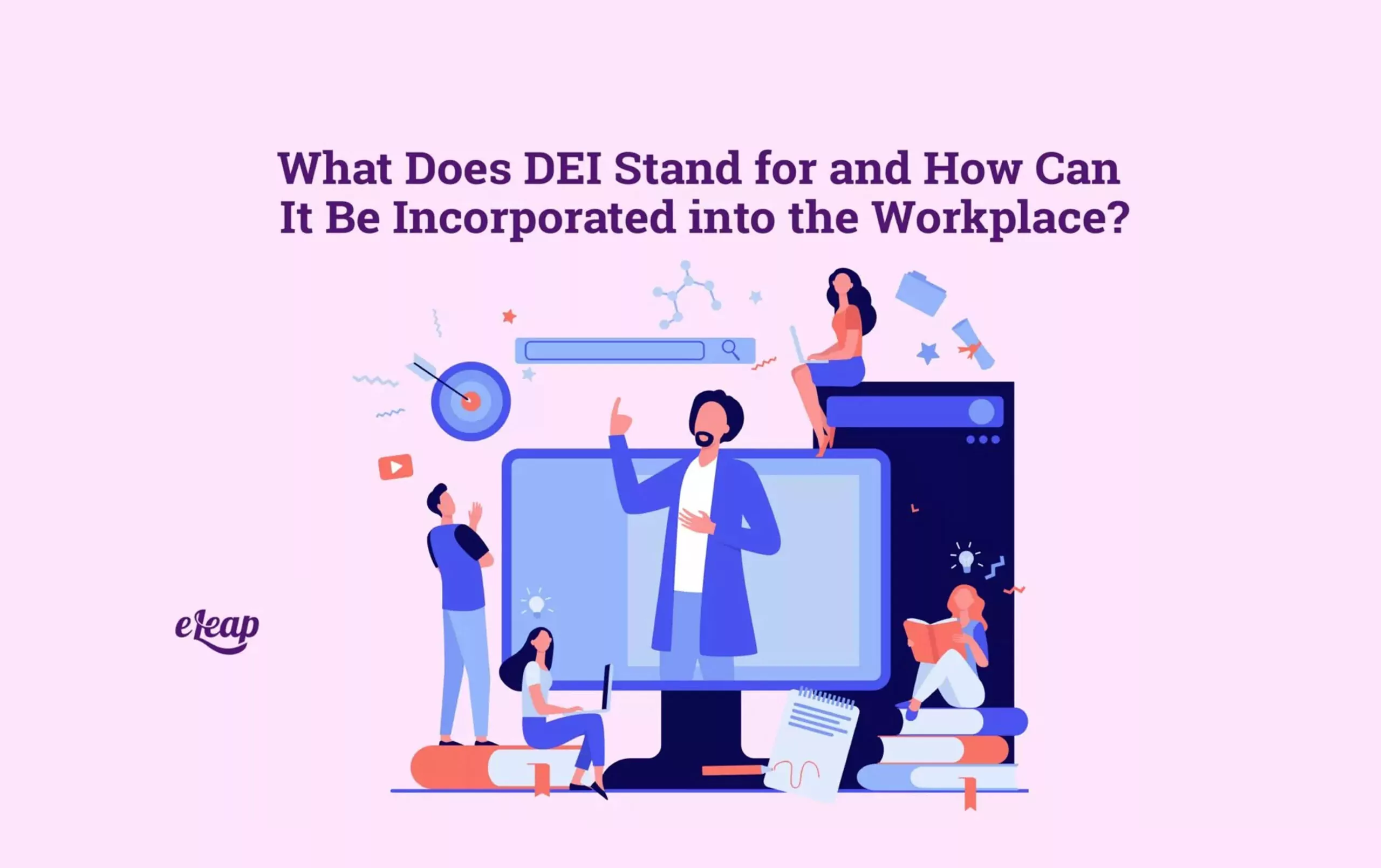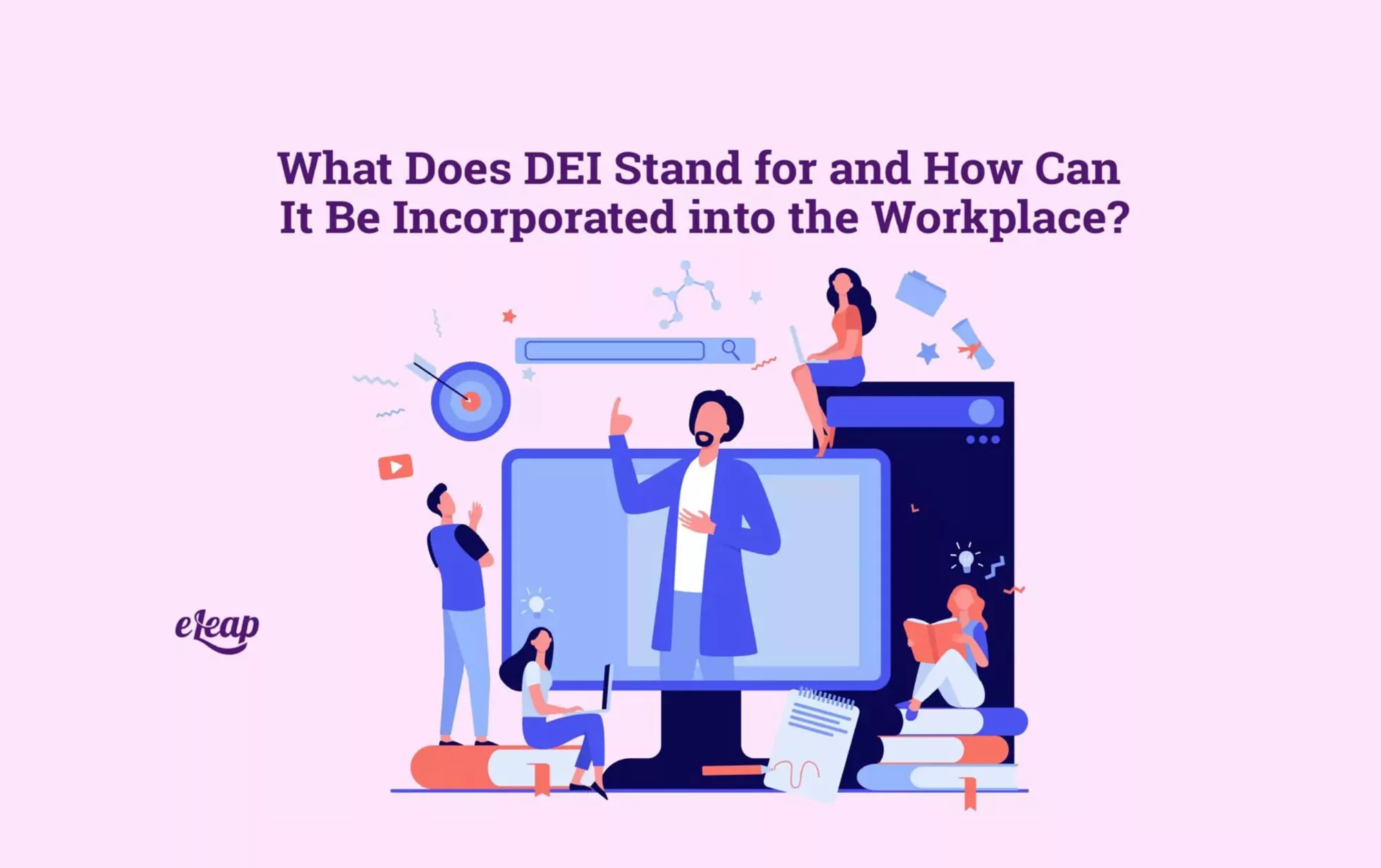What Does DEI Stand for and How Can It Be Incorporated into the Workplace?

Have you ever wondered, “what does DEI stand for?” If so, you’re far from alone. The good news is that we can give a short answer in a few words. In short, DEI refers to diversity, equity, and inclusion. These three words are more than the jargon that many might treat them as. They also deserve more than a concise annual training module. Organizations that really lean into learning “what does DEI stand for” and make it a priority are often the same ones that succeed.
However, it can take a lot of time and effort to go from having an answer to “what does DEI stand for” to making it part of your company culture. Every company will go about it differently. Before you start your journey toward a workplace where everyone has a place, let’s delve into what the three parts of DEI are all about.
Answering the Question – What Does DEI Stand For?
There are three parts to DEI. The first is diversity. Diversity refers to having different people within a single environment or setting.
When we look at a workplace, diversity is seeing people who are physically, socially, and psychologically different from others.
A diverse team is a group where many cultural and social characteristics all blend together.
To answer what does DEI stand for also requires an understanding of the term equity. Equity means that all team members are treated the same. Every person has the same opportunities and advancement options.
When a team prioritizes equity, barriers are identified and eliminated. Anything that keeps a certain group of people from doing the same thing as others should be removed.
Keep in mind that barriers can come in all different types. One study had a group of scientists look at application materials for potential candidates. Some had male names, and others had female names.
During the study, the scientists found those with male names more hirable and competent than those with female names, even if the applications were otherwise entirely the same.
In addition, the male candidates were offered higher salaries and additional career mentoring compared to females. This is what should be avoided.
The final part of “what does DEI stand for” is inclusion. It deals with the way people with different social identities feel in a group or team.
Having a diverse team doesn’t mean that inclusion is sure to happen, though. Having people from all walks of life on a team doesn’t mean each of them will feel welcome or as if they belong there.
So, again, what does DEI stand for? The three separate principles reinforce each other in the workplace or on a team.
Focusing on only one isn’t sufficient to ensure a diverse group that feels they belong in a workplace. Diversity, inclusion, and equity all work together to ensure a workplace that everyone can take part in and enjoy.

Why Diversity, Equity, and Inclusion Are Essential for Business
The companies that ignore DEI practices are the same ones that have fewer opportunities to enjoy the potential of people of all kinds.
In a study done by Unrealized Impact, it’s noted that diverse teams make better decisions and are more innovative. In addition, teams with diversity create better returns for their shareholders.
A second study, this one by McKinsey & Company and the Society of Human Research Management, looked at the performance at different levels of diversity in a workforce.
The organizations with better ethnic and gender diversity were 35% and 15% more likely to perform better than companies with less diverse teams.
The study also showed that organizations with better gender and racial diversity bring in more revenue from sales, better profits, and more customers.
Reasons to Implement a DEI Program
When you want satisfied and engaged workers, DEI programs are a must. Companies that have determined what DEI stands for and put in initiatives often enjoy many benefits.
For instance, those with DEI programs have team members who have better levels of trust, increased job satisfaction, and are more engaged in the workplace.
However, morale isn’t the only thing that DEI affects. Many benefits are associated with DEI programs throughout all levels of an organization.
- Teams are 158% more likely to understand their target customers if there are one or more members who are their culture, age, race, gender, or sexual orientation.
- Organizations with more management diversity earned 38% more revenue than those with less diversity. This may be related to industry background, career path, country of origin, or diversity of gender that is related to better innovation.
- Companies within the top 25% in gender diversity for executive leadership are 27% better at creating value and 21% more likely to make a profit.
When all these things are considered together, having an answer to what does DEI stand for can make a huge difference for companies. Employees feel they can come to work and simply be themselves. DEI initiatives can create better degrees of innovation, productivity, and engagement, leading to a more successful business.
Methods to Improve Diversity, Equity, and Inclusion in the Workplace
There are numerous ways to show you know what does DEI stand for in your company. Some are easy to implement, and others will take more time and energy.
Whichever you choose, it can only lead to a more diverse team that can see things from all different backgrounds and experiences.
Diversity
For instance, a diverse hiring team can be a great way to ensure the workplace becomes even more varied. Many people who hire others choose to bring on people similar to them. Without diversity, you could end up with a lot of people who all see things the same way.
Another method that works with hiring is implementing a blind hiring process. Identifying factors like names should be removed from resumes before anyone reviews them. Blind reviews force the focus to be on accomplishments rather than any unconscious bias.
It’s also great to hire people who can make a new contribution to the company culture. Culture fit means you hire those who will immediately have a place in the culture. Cultural contribution means hiring those who align with values while providing something new to the office.
Not sure how diverse the workplace is now? Get some statistics and find out. This lets you see who is underrepresented so you can work to bring them on in your next wave of recruiting.
Equity
All team members should have the chance for professional development. Work with each of them to see how you can assist them in growing. Career plans individualized for each worker ensure everyone has a chance to move forward, no matter what kind of work they do now.
Another way to create equity starts with looking at money. Many companies look at previous salaries before creating an offer for someone coming into the company. This isn’t always the best way to do things.
For instance, if someone was paid unfairly at their last company, you make that cycle continue. Instead, create pay bands and salary guidelines that you can use as you bring on new people. This ensures every team member is paid a fair wage or salary for any position at the company.
Advancement opportunities should be available for everyone you hire. A diverse workforce isn’t going to be of much use if they never move away from the lower levels at the company. It can hurt your DEI efforts as a whole to do this.
Instead, look at diverse employees when you hire for upper management levels. Consider diverse workers for internal promotions, too. This ensures that all employees can work their way up and find promotions that appeal to them at the business.
Inclusion
Efforts must be made to ensure a workplace is continuously inclusive. However, there are many ways to ensure you improve inclusion regularly.
For instance, make a policy in the company about inclusion. Be sure that it addresses any past issues that have led to a lack of inclusion for your workers.
It’s also essential to consider the company culture. Do what is necessary to ensure every person on the team has the psychological safety they deserve. The environment should make all ideas encouraged, and all people valued.
When using a diverse team, consider more versatile benefits. Floating holidays often work better than having everyone take standard holidays. Employees can then take off the days that correspond to important days for them on an individual basis.
Another great option is to ensure all benefits have options for LGBTQA+ individuals.
Creating an onboarding program with mentos can also make people more comfortable at work. This helps new team members meet their coworkers and learn about the culture. Make sure support is provided for the first few months.
In Conclusion
Most companies today want to bring in great talent, retain those workers, and ensure they are engaged. The best way to ensure that starts with answering the question, “what does DEI stand for?” After the question is answered, look for solutions to increase each of these things in the workplace.
Bringing in a few DEI initiatives based on the organization’s needs can lead to better equitable outcomes and ensure all great talent is engaged, appreciated, and seen in the workplace.